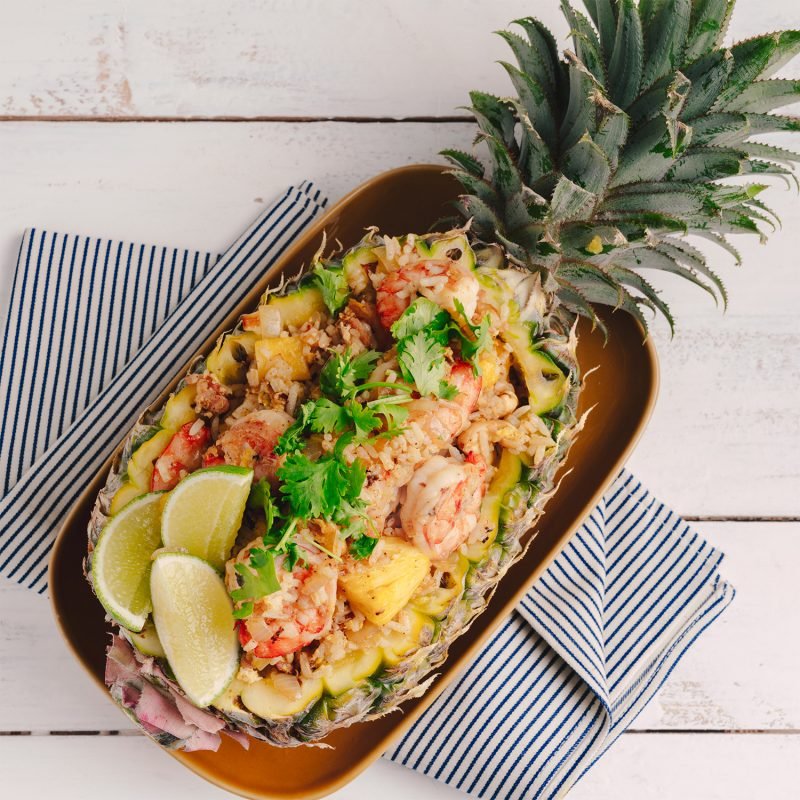Embark on a flavorful journey to the heart of Puerto Rican cuisine as we uncover the secrets to crafting perfectly crispy tostones. These golden, twice-fried plantain slices are a beloved Caribbean delicacy, celebrated for their irresistible crunch and versatility. Under the guidance of a renowned Puerto Rican chef, we’ll explore every step of the process—from selecting the ideal plantains to mastering the art of double-frying. Whether you’re a seasoned cook or a curious beginner, this guide will equip you with the knowledge and techniques to create tostones that are crispy, flavorful, and authentically Puerto Rican.
The Art of Plantain Selection: Choosing the Ideal Plantains for Crispy Tostones
The foundation of great tostones lies in selecting the right plantains. Unlike their sweeter, ripe counterparts used for dishes like maduros, tostones require green or slightly yellow plantains. These unripe plantains are firm, starchy, and perfect for achieving the desired crispiness. Here’s what to look for:
- Firmness: The plantains should be hard to the touch, with no soft spots.
- Color: Opt for plantains with a green or slightly yellow hue. Avoid those with black spots, as they indicate overripeness.
- Blemishes: Choose plantains free of bruises or cuts, as these can affect texture and flavor.
Once you’ve selected your plantains, peel them carefully using a sharp knife. Slice them crosswise into rounds approximately 1/4-inch thick. Rinse the slices under cold water to remove excess starch, which can cause stickiness, and pat them dry with paper towels before frying.
Mastering the Cutting Technique: Precision and Consistency for Evenly Crispy Results
The key to achieving uniformly crispy tostones lies in the precision of your cutting technique. Follow these steps for perfect slices:
- Slice Evenly: Use a sharp knife to cut the plantains into rounds of consistent thickness. Aim for 1/4-inch slices to ensure even cooking.
- Rinse and Dry: After slicing, rinse the rounds under cold water to remove surface starch. This step prevents clumping and promotes even frying.
- Pat Dry: Thoroughly dry the slices with paper towels to eliminate moisture, which can cause oil splatter and uneven browning.
By taking the time to cut and prepare your plantains with care, you’ll set the stage for tostones that are crispy on the outside and tender on the inside.
The Perfect Frying Method: Secrets to Achieving Maximum Crispiness
The hallmark of great tostones is the double-frying technique, which ensures a crispy exterior and a fully cooked interior. Here’s how to master this method:
- First Fry: Heat oil (preferably vegetable or canola) in a deep skillet or frying pan to 350°F (175°C). Fry the plantain slices in batches for 2-3 minutes, or until they are lightly golden and softened. Remove them from the oil and drain on paper towels.
- Flattening: While the slices are still warm, use a tostonera (a wooden press) or the bottom of a flat plate to flatten each round to about 1/8-inch thickness. This step is crucial for creating the signature tostone shape and texture.
- Second Fry: Return the flattened slices to the hot oil and fry for an additional 2-3 minutes, or until they turn a deep golden brown and achieve a crispy texture. Remove from the oil and drain on paper towels.
For an extra layer of crispiness, consider dusting the plantain slices with a light coating of cornstarch or seasoned flour before frying. This trick adds a delightful crunch to every bite.

Seasoning Secrets: Enhancing the Flavor and Aroma of Tostones
While tostones are delicious on their own, seasoning takes them to the next level. Here are some ideas to elevate their flavor:
- Sazón: Sprinkle your tostones with sazón, a traditional Puerto Rican seasoning blend that typically includes garlic powder, cumin, coriander, and annatto for a vibrant color and rich flavor.
- Homemade Blend: Create your own seasoning mix using garlic powder, onion powder, paprika, oregano, and salt. Adjust the proportions to suit your taste.
- Marination: For a deeper flavor, marinate the plantain slices overnight in a mixture of lime juice, olive oil, and spices before frying. This infuses the tostones with a tangy, aromatic profile.
- Finishing Touch: After frying, sprinkle the tostones with a pinch of sea salt or drizzle them with a bit of garlic-infused olive oil for an extra burst of flavor.
Serving Suggestions: Pairing Tostones with Classic Accompaniments
Tostones are incredibly versatile and can be enjoyed in a variety of ways. Here are some classic pairings to complete your meal:
- Dipping Sauces: Serve tostones with garlic mojo, cilantro-lime crema, or spicy aioli for a creamy, tangy contrast.
- Protein Pairings: Tostones make an excellent side dish for grilled chicken, fried fish, or shrimp ceviche.
- Toppings: For a heartier option, top your tostones with shredded beef, black beans, or avocado slices.
- Salads: Pair tostones with a fresh tropical salad featuring mango, pineapple, and a citrus vinaigrette for a refreshing balance.
Future Outlook: Embracing the Spirit of Puerto Rican Cuisine
As you savor your first bite of perfectly crispy tostones, let the flavors transport you to the vibrant streets of Puerto Rico. This culinary odyssey has not only unlocked the secrets to a beloved dish but also celebrated the rich traditions and creativity of Puerto Rican cooking.
May your future tostone endeavors be filled with the perfect crunch, bold flavors, and the warmth of shared meals. Whether you’re cooking for family, friends, or simply treating yourself, remember that every bite is a tribute to the artistry and passion of Puerto Rican cuisine.
So, grab a tostone, close your eyes, and let the symphony of flavors dance on your tongue. ¡Buen provecho!
In the Vast Expanse of the Culinary Realm: The Tale of Cowboy Fried Rice
In the ever-evolving world of gastronomy, where cultures collide and flavors intertwine, there exists a dish that defies convention and captivates the senses: Cowboy Fried Rice. This unique creation is a harmonious blend of Western ruggedness and Asian finesse, a culinary masterpiece that tells a story of adventure, tradition, and innovation. Join us as we embark on a flavorful journey to uncover the secrets of Cowboy Fried Rice, a dish that bridges the gap between the Old West and the Orient, leaving a lasting impression on every palate it graces.
The Savory Staple of Cowboy Cuisine: A Deep Dive into Cowboy Fried Rice
Cowboy Fried Rice is more than just a meal—it’s an experience. Imagine the crackling of a campfire, the scent of sizzling steak, and the aroma of onions and peppers wafting through the air. This dish captures the essence of the Wild West, combining hearty ingredients with the comforting familiarity of fried rice. At its core, Cowboy Fried Rice is a celebration of simplicity and bold flavors, making it a favorite among cowboys, campers, and home cooks alike.
The dish typically features tender steak, aromatic onions, vibrant bell peppers, and fluffy rice, all brought together in a skillet to create a symphony of textures and tastes. Whether enjoyed under the open sky or at the family dinner table, Cowboy Fried Rice embodies the spirit of adventure and the warmth of shared meals.
Unlocking the Secrets of Cowboy Fried Rice: Ingredients and Techniques
The magic of Cowboy Fried Rice lies in its carefully selected ingredients and time-honored techniques. Here’s what you’ll need to create this culinary masterpiece:
Key Ingredients:
- Day-Old Rice: The foundation of any great fried rice, day-old rice is slightly hardened, ensuring it doesn’t become mushy when cooked.
- Flank Steak: Tender and flavorful, flank steak adds a hearty protein base that’s quintessentially Western.
- Aromatics: Onions and bell peppers bring sweetness and depth, while jalapeños add a touch of heat.
- Corn: A nod to the American frontier, corn adds a subtle sweetness and texture.
- Seasonings: Soy sauce, garlic, and a dash of spice tie the dish together, creating a perfect balance of flavors.
Cooking Techniques:
- Prep the Rice: Use day-old rice for the best texture. Break up any clumps before cooking.
- Sear the Steak: Cook the flank steak in a hot skillet until it’s charred on the outside and tender on the inside. Slice it thinly against the grain.
- Sauté the Aromatics: In the same skillet, cook the onions, bell peppers, and jalapeños until they’re soft and fragrant.
- Combine and Cook: Add the rice and steak to the skillet, tossing everything together with soy sauce and seasonings. Cook until the rice is heated through and slightly crispy.
- Finish with Flair: Garnish with fresh herbs, a squeeze of lime, or a sprinkle of cheese for an extra layer of flavor.

Culinary Canvas for Creativity: Exploring Flavor Variations in Cowboy Fried Rice
One of the most exciting aspects of Cowboy Fried Rice is its versatility. The dish serves as a blank canvas, inviting you to experiment with different ingredients and flavors. Here are some ideas to inspire your culinary creativity:
- Protein Variations: Swap flank steak for shredded chicken, beef barbacoa, or even smoked sausage.
- Vegetable Additions: Incorporate diced tomatoes, zucchini, or mushrooms for added color and nutrition.
- Cheesy Twist: Melt sharp cheddar or pepper jack cheese over the rice for a creamy, indulgent finish.
- Spice It Up: Add diced jalapeños, a dash of hot sauce, or a sprinkle of chili powder for a fiery kick.
- Asian Fusion: Introduce elements like sesame oil, ginger, or kimchi to give the dish an Eastern twist.
The possibilities are endless, making Cowboy Fried Rice a dish that’s as unique as the person preparing it.
Savor the True Western Spirit: Pairing Suggestions for Cowboy Fried Rice
To fully appreciate the flavors of Cowboy Fried Rice, consider pairing it with beverages that complement its bold and smoky profile:
- Amber Ale: The malty sweetness of an amber ale cuts through the richness of the dish, enhancing its smoky undertones.
- Dry White Wine: A crisp, dry white wine like Sauvignon Blanc balances the flavors without overpowering the dish.
- Bourbon: For a true Western experience, sip on a glass of bourbon. Its warmth and complexity harmonize beautifully with the earthy flavors of the rice.
In Conclusion: A Culinary Adventure Worth Savoring
As our journey through the world of Cowboy Fried Rice comes to an end, we’re left with a deep appreciation for this dish’s ability to bring people together. From its humble beginnings at a chuckwagon to its modern incarnation as a fusion favorite, Cowboy Fried Rice continues to captivate and inspire.
So, the next time you’re in the mood for a culinary adventure, grab your skillet and whip up a batch of Cowboy Fried Rice. Let its bold flavors and rich history transport you to the untamed frontier, where every bite tells a story of resilience, creativity, and the enduring spirit of the Wild West. Happy cooking, and may your meals always be filled with adventure!

